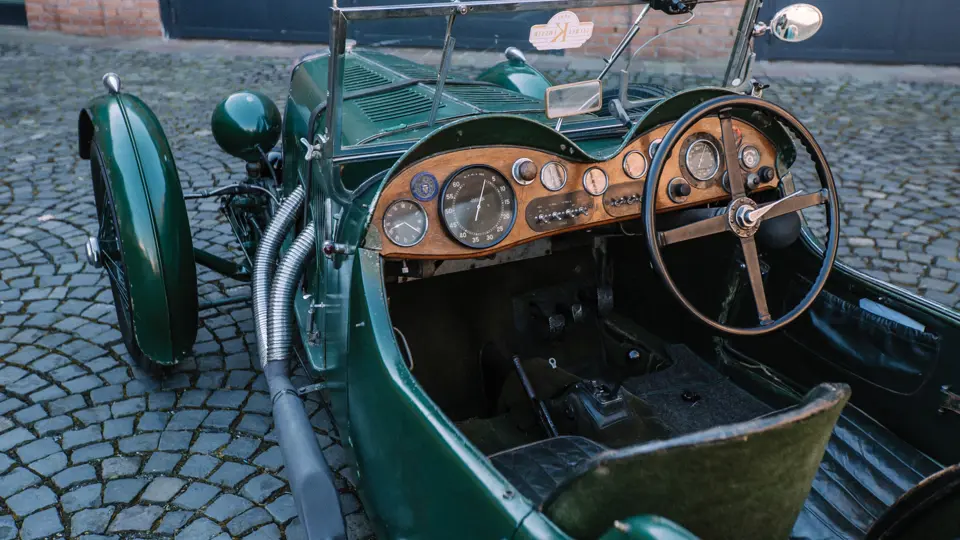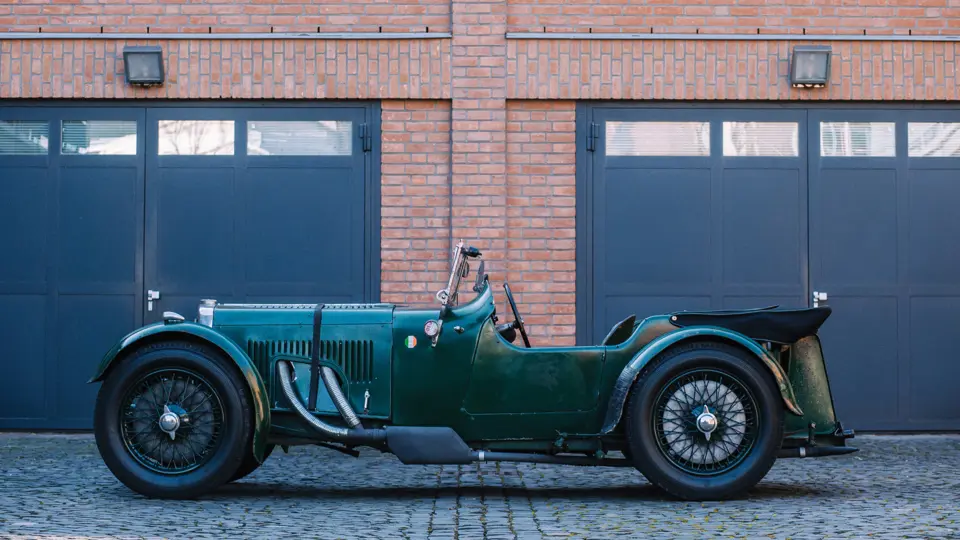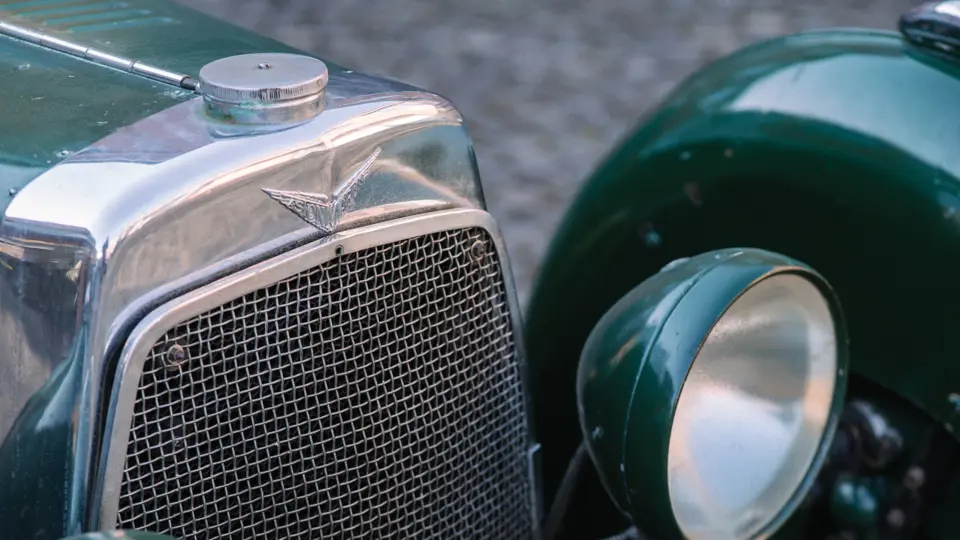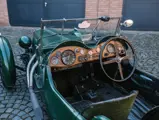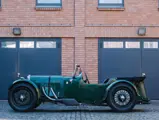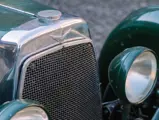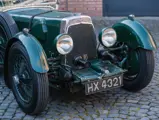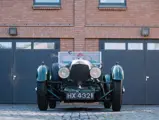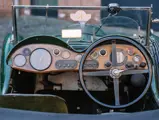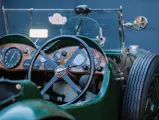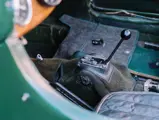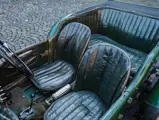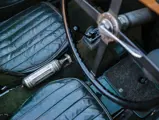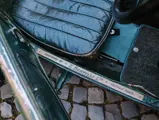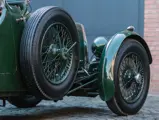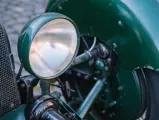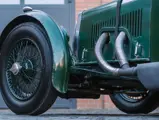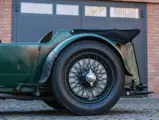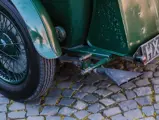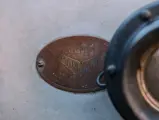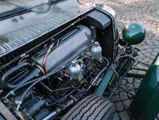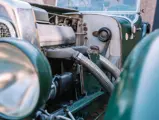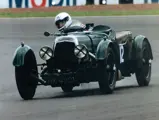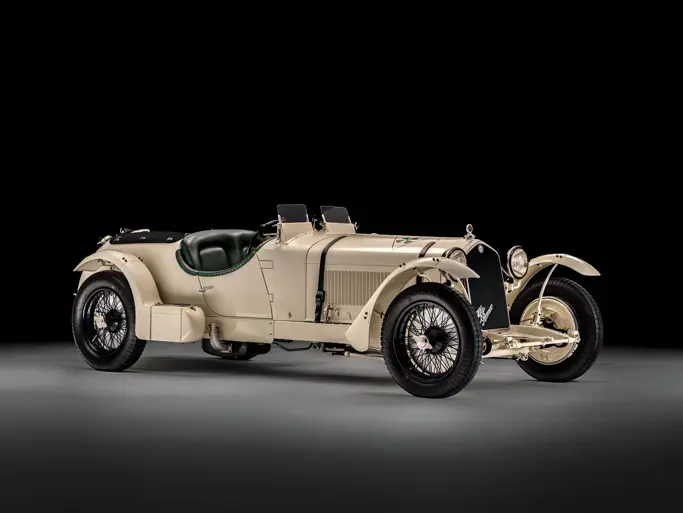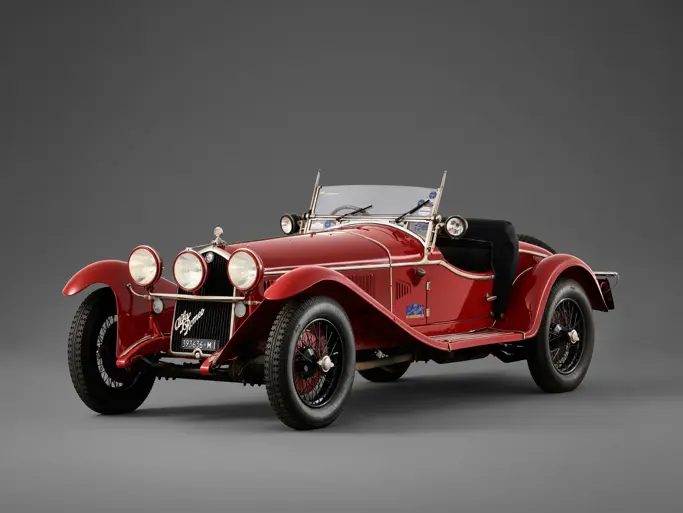
1931 Aston Martin 1.5-Litre International 'LM5'
{{lr.item.text}}
€1,000,000 - €1,400,000 EUR | Not Sold
{{bidding.lot.reserveStatusFormatted}}
- The first of the 1931 Works Team cars
- Competed in the 1931 24 Hours of Le Mans and 1931 Brooklands Double Twelve
- 1st in class at 1931 Tourist Trophy
- Extraordinarily original from when it left the Works in 1932
- Fantastic provenance from new and highly eligible for events today
- Una delle originali Aston Martin della squadra corse ufficiale del 1931
- Seconda di classe alla Brooklands Double 12 del 1931
- Prima di classe al RAC Tourist Trophy del 1931
- Per sei decenni, di proprietà di una sola famiglia
- Restaurata da Ecurie Bertelli nel 1996
- Attualmente di proprietà di un noto collezionista Aston Martin e appassionato di corse
- Accompagnata da una sorprendente quantità di documenti storici
By 1931, Aston Martin was already familiar with the “feast and famine” cycle that the marque would experience over the coming century. Four years after purchasing the bankrupt company for £10,000 – just over £410,000 today – A.C Bertelli found himself without financial backing, having seen several of his partners come and go due to a lack of commercial success.
Part of the financial problem was Bertelli’s insistence on racing; although good as a means of development, the initial team cars – LM1, LM2, LM3, and LM4 – had only a few class wins under their belts and had not competed outside of the British Isles since retiring at the 24 Hours of Le Mans in 1928. The world economic situation meant that by 1931, luxury car marques were not performing well and Bertelli was forced to finance Aston Martin through H.J. Aldington of Frazer Nash. While this was a personal blow, it did mean that Aston Martin was able to field three new International models for the 1931 season – one of which is this very car.
Chassis number LM5, the first of the 1931 Works cars, is one of the most highly developed Internationals ever built by A.C. Bertelli. For the first time, the whole team was fitted with nearly identical bodies, equipped with lowered radiators, large cowled scuttles, door-less cutaway sides, and round sloping tails. The Renwick and Bertelli 1.5-litre overhead camshaft four-cylinder engine with dry sump ensured that the Internationals reached speeds in excess of 90 mph.
LM5 performed admirably during it debut at the Brooklands Double 12 driven by ‘Bentley Boy’ Clive Gallop and L. Cushman; Sir Malcolm Campbell drove it in practice, but switched to a Mercedes SS. Taking into accordance the terrible mist and rain decreasing visibility, LM5 suffered punctures but was able to secure 2nd in class, behind LM6. The team appeared at that years Le Mans; however, after 126 laps LM5 was forced to retire along with all but six of the entrants. LM5’s greatest success came when C.M. Harvey drove LM5 at August’s RAC Tourist Trophy, finishing 14th overall and 1st in class. With the successes of LM6 and LM7 included, the 1931 season had been the best yet – good enough for Bertelli to find financial backing with in Lance Prideaux-Brune and ensure continued production.
Post-season, LM5 was to be Prideaux-Brune’s personal vehicle, raced by C. M. “Dick” Anthony at venues such as Brooklands. At Prideaux-Brune’s request, it was fitted with a 2/4-seater body as noted on the accompanying build record. Many of the ex-Works Aston Martins were converted to 2/4 form upon retirement to help sell them. It was in this form that LM5 competed in the 1933 RAC Rally. After passing through two private owners, Mr. Roland Hirons purchased the Aston for £185. Incredibly, Mr. Hirons kept LM5 virtually unchanged for over 50 years, at which point he sold it to David Acon who immediately brought the car to pre-war Aston Martin specialists Ecurie-Bertelli.
Upon inspection, Ecurie Bertelli found LM5 to be in need of a comprehensive mechanical restoration. Experts in their trade, they kept LM5 as original as possible – even replacing the unique lightweight Electron engine casing with correct factory parts handed down over the decades. An entire engine rebuild was performed, and new gearbox bearings were installed. LM5 was found to have a worn drive axle, as such a new gear was made by David Brown Engineering.
Currently owned and cared for by a prominent Aston Martin enthusiast, LM5 still carries much of its original beauty. Extraordinarily original from its 1932 form, LM5’s patina exudes charm and charisma, something lost by so many cars during restoration; its condition would make it an ideal candidate for preservation class at concours events. In addition, LM5 is accompanied by a wonderful history file including the original Instruction Manual.
One of the cars that raced to save the marque, this 1.5-litre International is an incredibly special piece of Aston Martin history, and without a doubt one of the best Bertelli-era Aston Martin’s extant. Equally stunning at speed or on display, LM5 is sure to provide endless joy for its next owner.
Nel 1931, Aston Martin già conosceva il ciclo di "ricchezza e povertà" che avrebbe contraddistinto il marchio nel corso di tutto il secolo successivo. Quattro anni dopo aver acquistato la società, in bancarotta, per £ 10.000 - poco più di £ 410.000 di oggi - A.C Bertelli si è ritrovato, dopo aver visto molti dei suoi soci andare e venire a causa della mancanza di successo commerciale, senza sostegno finanziario.
Parte del problema finanziario era, senz’altro, legato all’insistenza di Bertelli nel voler correre; pur essendo un buon modo di fare sviluppo tecnico, le prime vetture della squadra corse - LM1, LM2, LM3 e LM4 - avevano ottenute solo poche vittorie di classe e non avevano mai gareggiato al di fuori delle Isole britanniche da quando, nel 1928, si erano ritirate durante la 24 Ore di Le Mans. La situazione economica mondiale, inoltre, faceva sì che nel 1931, le marche di auto di lusso non andassero bene e Bertelli si trovò costretto a finanziare l'Aston Martin attraverso HJ Aldington della Frazer Nash. Questo, senz’altro un successo personale di Bertelli, ha significato che Aston Martin era in grado di schierare tre nuove auto del modello International per la stagione 1931. Una di queste, è proprio la macchina offerta.
La vettura con numero di telaio LM5, la prima delle automobili ufficiali del 1931, è una delle International meglio preparate mai costruita da A.C. Bertelli. Per la prima volta, l'intera squadra era equipaggiata con auto dalla carrozzeria quasi identica, dotate di radiatori abbassati, ampie prese d’aria incassate, fiancate abbassate, sagomate e prive di portiera e code, inclinate, arrotondate. Il motore quattro cilindri a camme in testa da 1,5 litri con carter secco, ideato da Renwick e Bertelli. assicurava che le International potessero raggiungere velocità superiori alle 90 miglia (144 km/h) orarie.
LM5 si è comportata benissimo al suo debutto alla Brooklands Double 12, guidata dal "Bentley Boy" Clive Gallop e da L. Cushman; Sir Malcolm Campbell l’ha guidata durante le prove, ma è poi passato ad una Mercedes SS. Malgrado la terribile foschia e la pioggia che hanno progressivamente diminuito la visibilità, e delle forature subite, LM5 è riuscita a concludere ottenendo il 2° posto in classifica, appena dietro la LM6. Lo stesso anno, la squadra ha preso parte alla gara di Le Mans, tuttavia, dopo 126 giri, LM5 è stata costretta al ritiro, cosa che è successa a tutti, tranne sei, partecipanti. Il maggior successo di LM5 è arrivato quando C.M. Harvey l’ha guidata al RAC Tourist Trophy di agosto, concludendo 14° assoluto e 1° di classe. Aggiungendo a questo i successi ottenuti da LM6 e LM7, la stagione del 1931 era stata la migliore avuta fino a quel momento, buona abbastanza per permettere a Bertelli di trovare un sostegno finanziario nella persona di Lance Prideaux-Brune e garantire, così, la continuità della produzione.
Terminata la stagione, LM5 diventa il veicolo personale di Prideaux-Brune, portato in gara da C. M. "Dick" Anthony in posti come Brooklands. Su richiesta di Prideaux-Brune, la macchina era stata dotata di una carrozzeria a 2/4 posti, come viene chiaramente indicato nella scheda di produzione allegata. Molte delle vetture “ex-Works” di Aston Martin sono state convertite proprio con carrozzerie 2/4 posti al momento del pensionamento, perché questo le rendeva più appetibili e, quindi, più facili da vendere. Proprio in questa forma, LM5 ha partecipato al RAC Rally del 1933. Dopo essere passata attraverso due proprietari privati, LM5 è stata comprata, per £ 185, dal signor Roland Hirons. Incredibilmente, il Sig. Hirons ha poi tenuto LM5 praticamente senza alcuna modifica, per oltre 50 anni, quando l’ha venduta a David Acon che, immediatamente, l’ha portata dagli specialisti delle Aston Martin ante guerra, Ecurie-Bertelli.
Dopo un'ispezione, Ecurie Bertelli ha ritenuto che LM5 necessitasse di un restauro meccanico completo. Specialisti seri nel loro lavoro, hanno però mantenuto LM5 il più originale possibile, come quando, per sostituire il rarissimo carter del motore realizzato in leggerissimo Electron, hanno utilizzato pezzi originali, e corretti, acquistati dalla fabbrica nel corso dei decenni. Il motore è stato completamente rifatto e, sono stati installati nuovi cuscinetti del cambio. Il differenziale, usurato, è stato sostituito da uno nuovo, espressamente realizzato dalla David Brown Engineering.
Attualmente di proprietà e curata da un importante appassionato di Aston Martin, LM5 conserva ancora gran parte della sua bellezza originale. Straordinariamente originale in ogni sua componente del 1932, la patina di LM5 emana fascino e carisma, qualcosa perso da molte macchine durante il restauro. La sua condizione la rende una candidata ideale per le classi “Preservation” in occasione dei concorsi di eleganza. Inoltre, LM5 è accompagnata da una meravigliosa serie di documenti storici, che include anche il Manuale di istruzioni originale.
Una delle auto che hanno corso per salvare la marca, questa International da 1,5 litri è un pezzo incredibilmente speciale della storia di Aston Martin, e, senza dubbio, una delle migliori Aston Martin dell’era Bertelli. Spettacolare sia da ferma, in esposizione, sia in piena velocità, LM5 ha sicuramente il potenziale di diventare una gioia infinita per il suo prossimo proprietario.
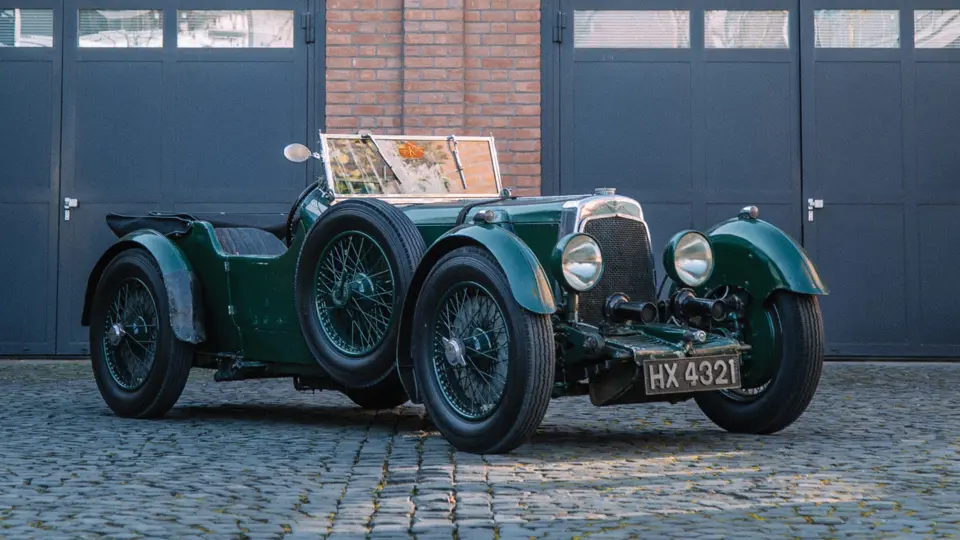

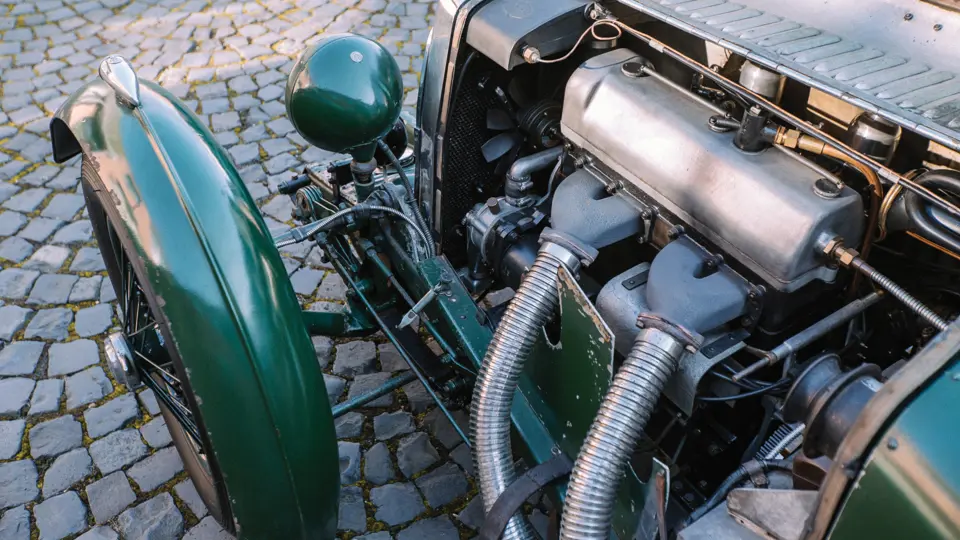

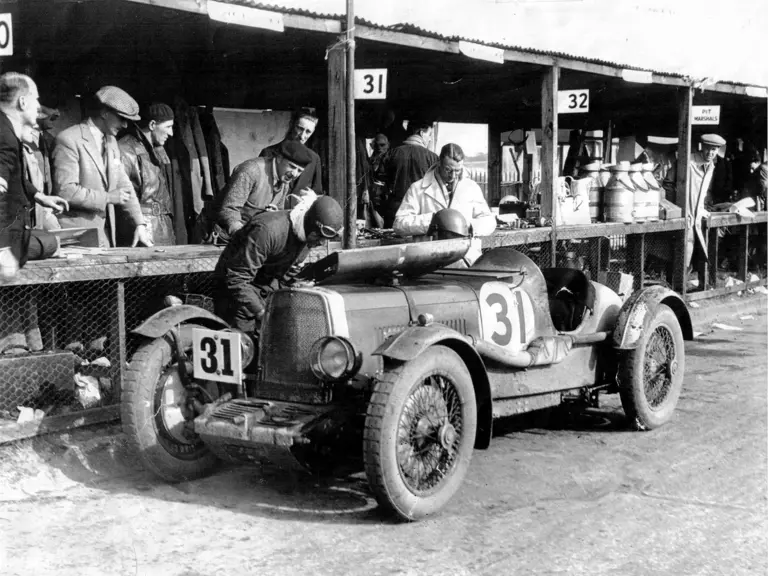
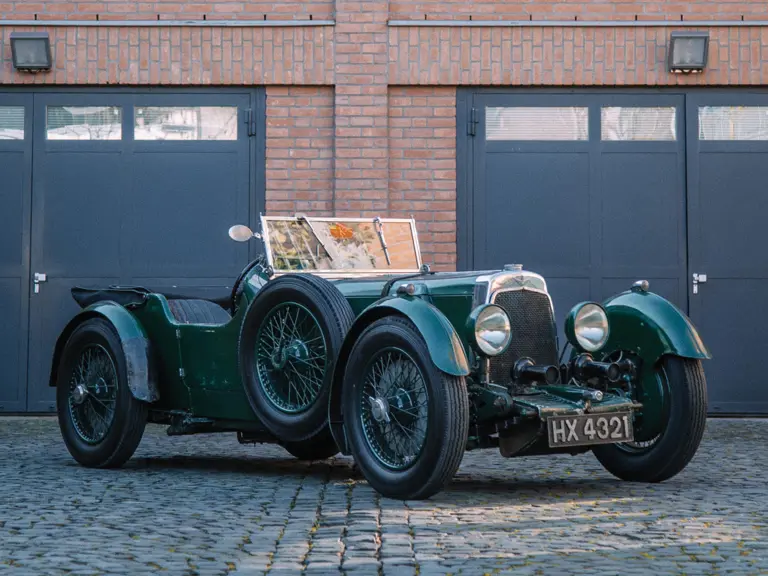
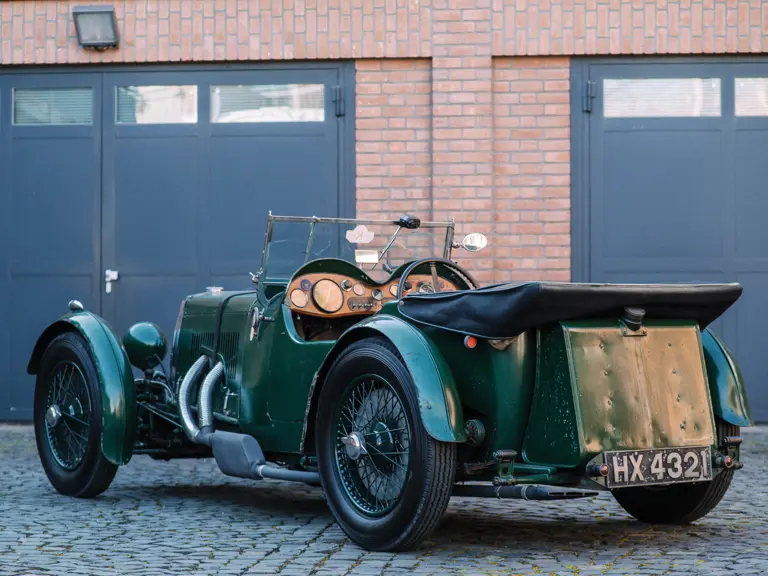
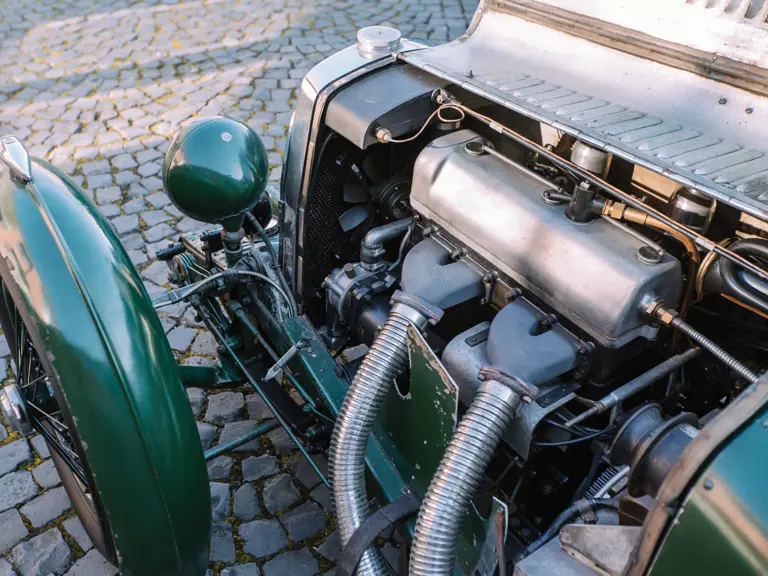
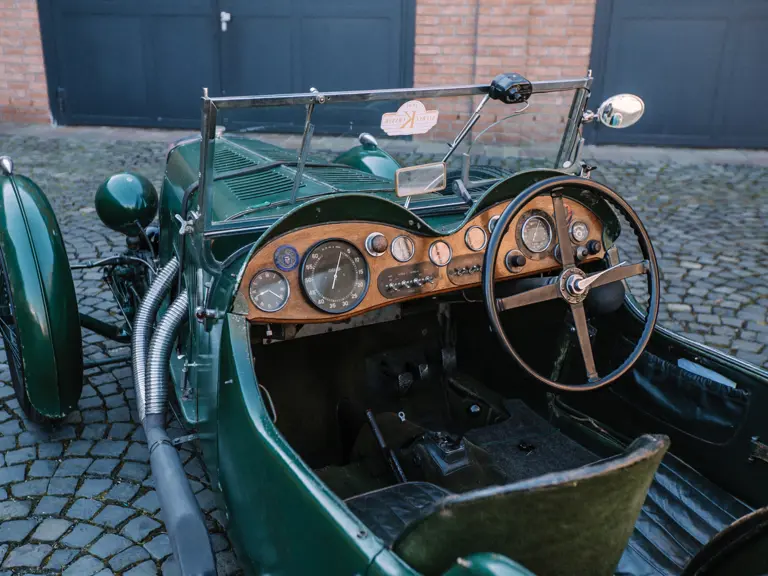
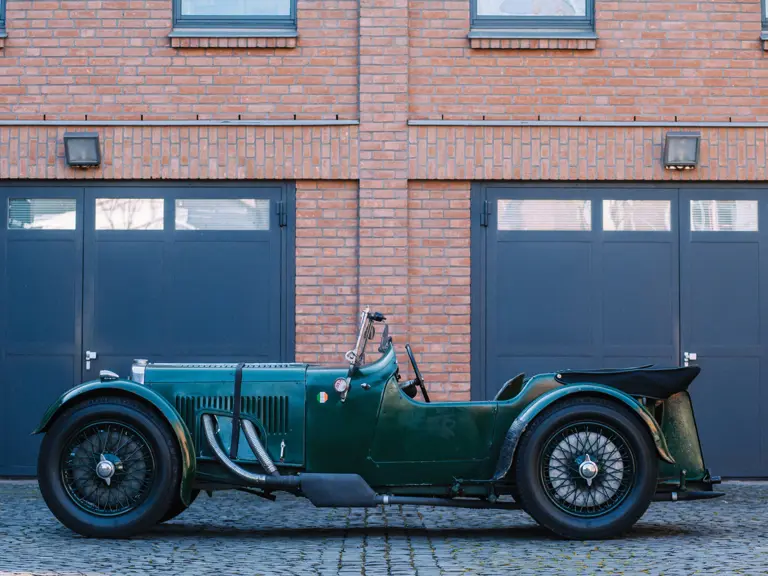
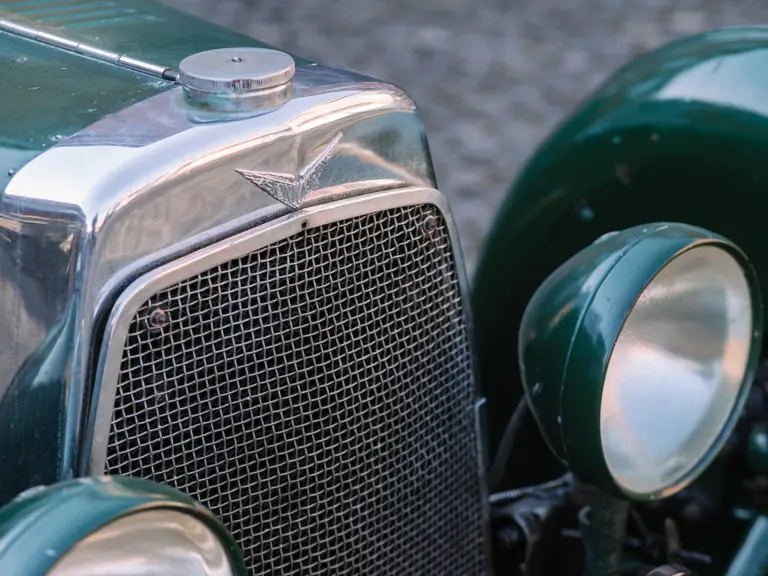

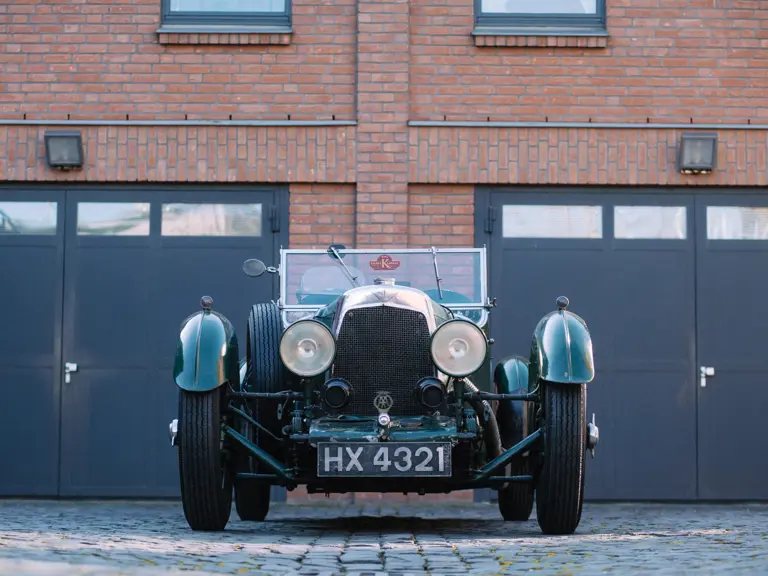
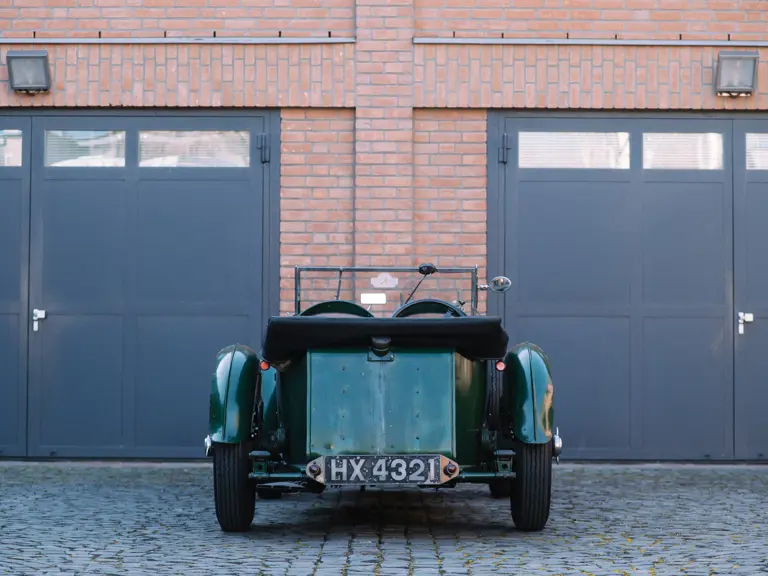
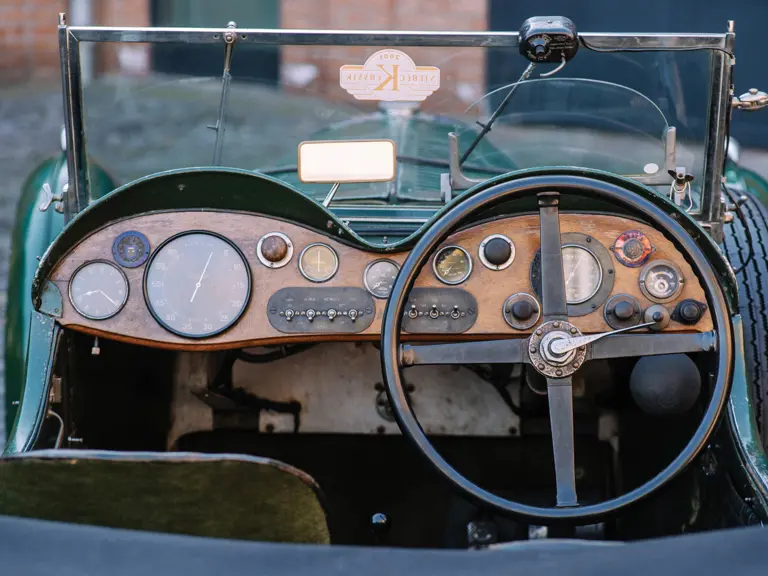
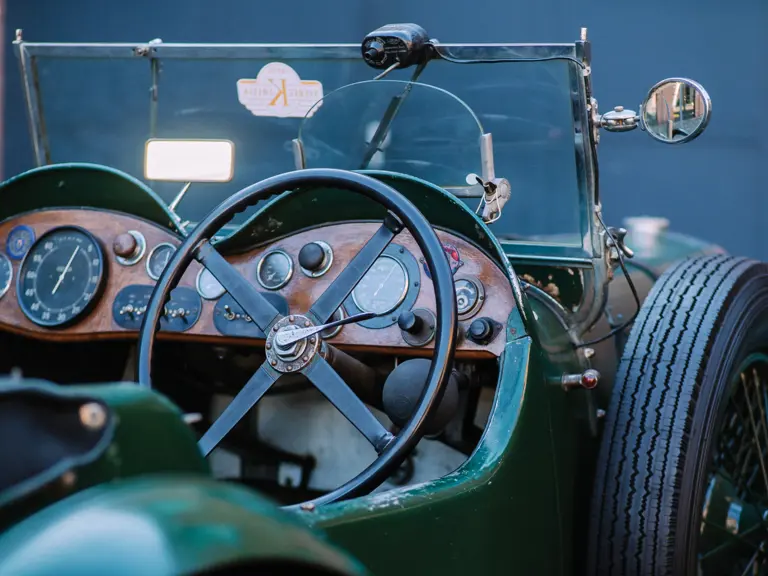
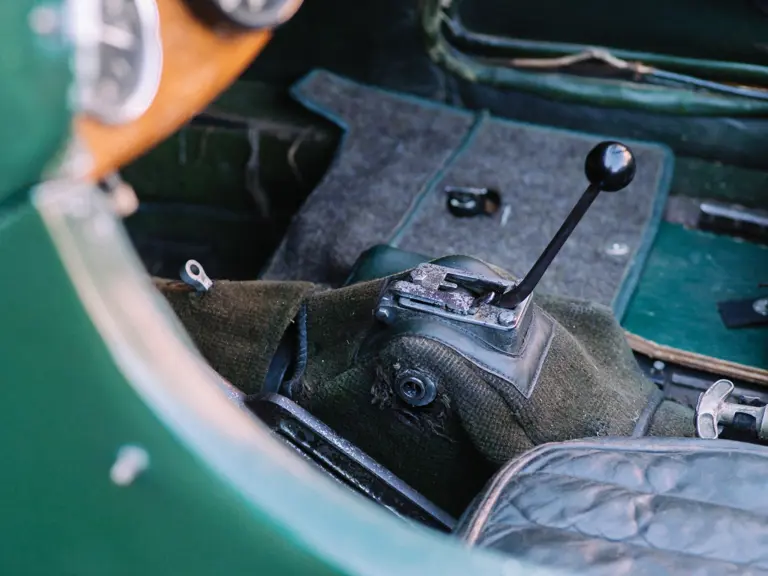

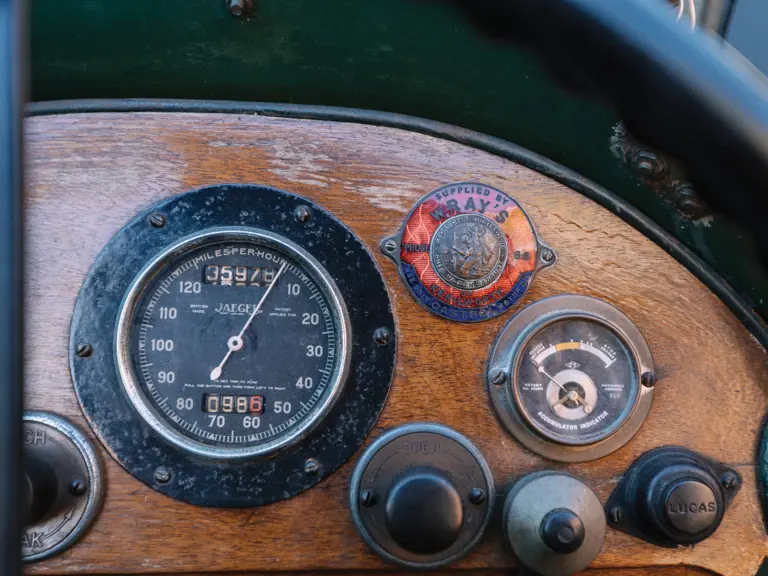
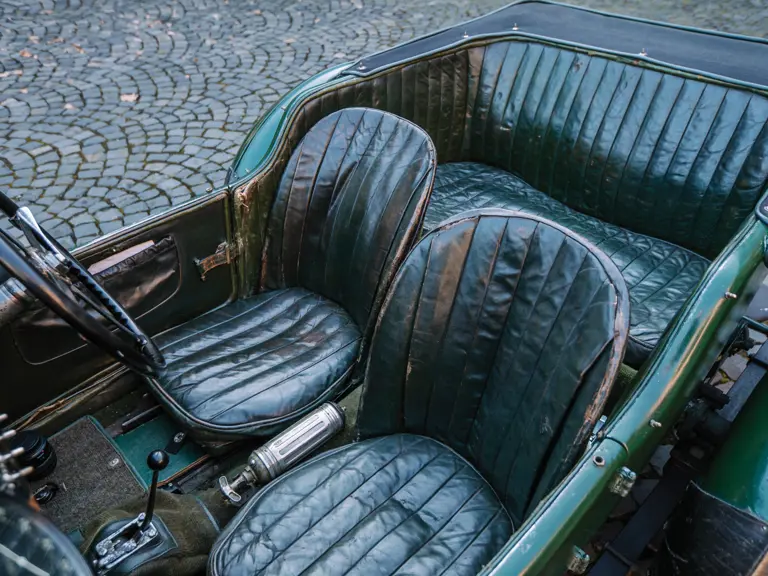

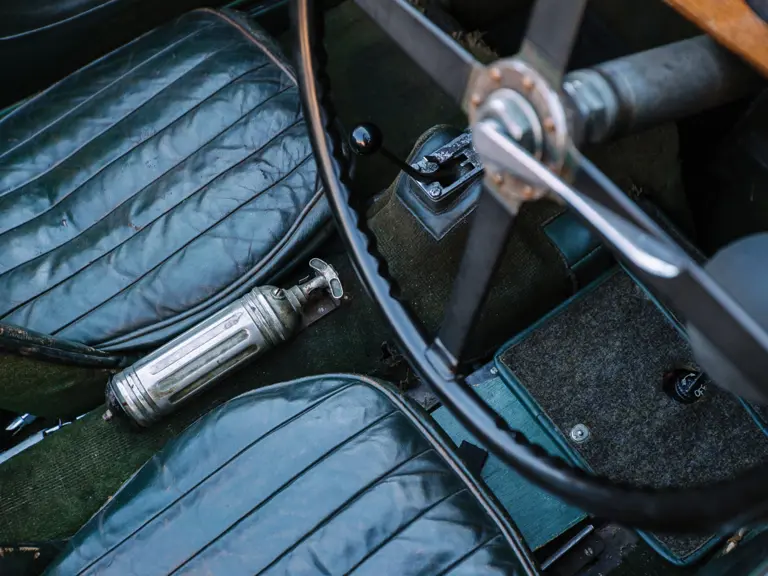
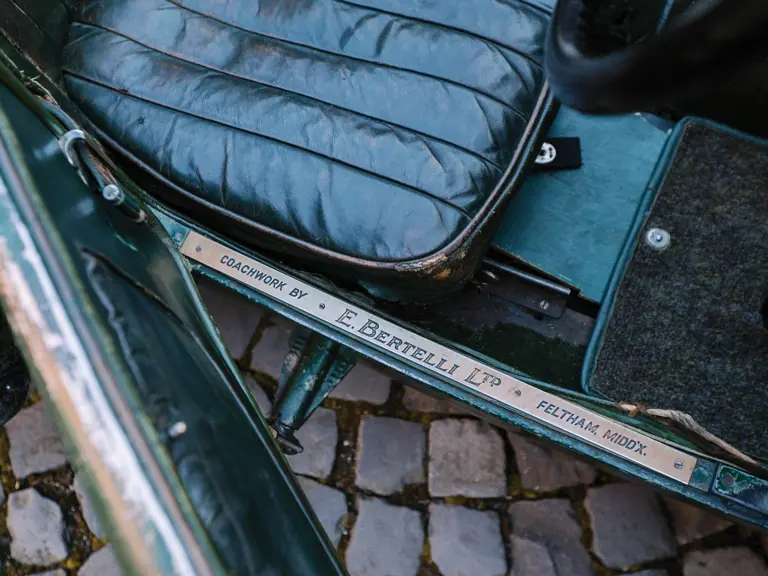
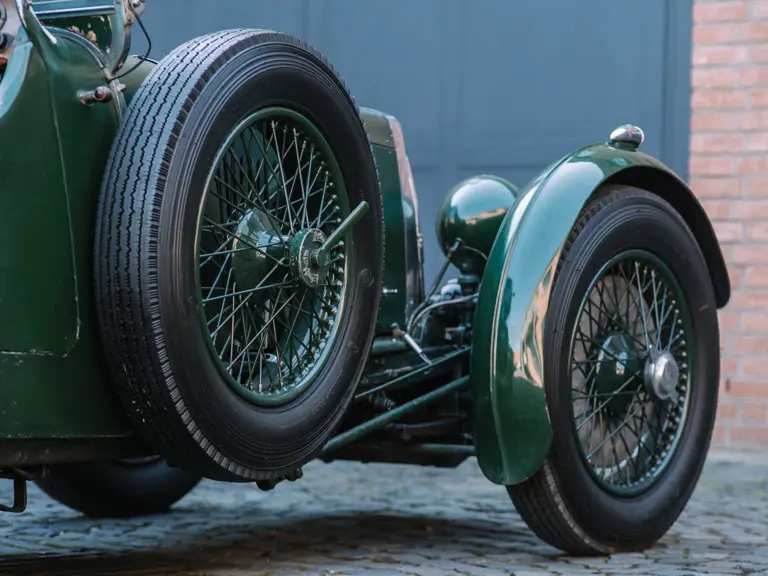


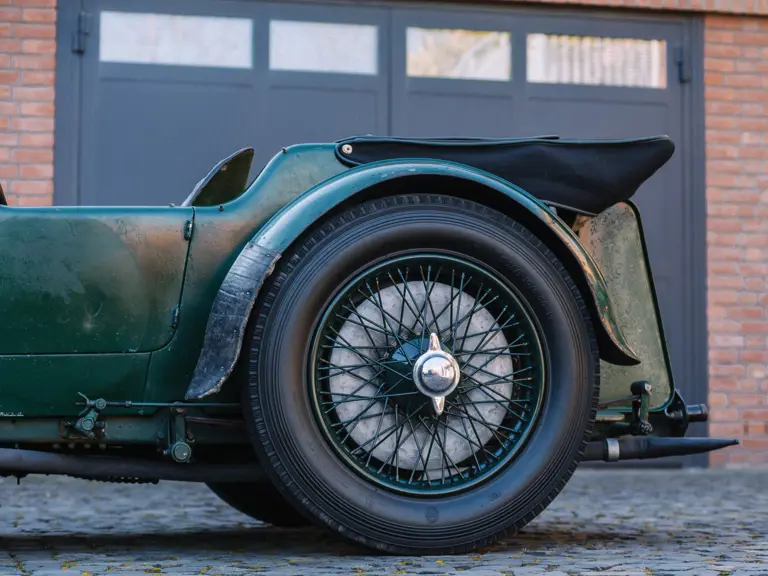
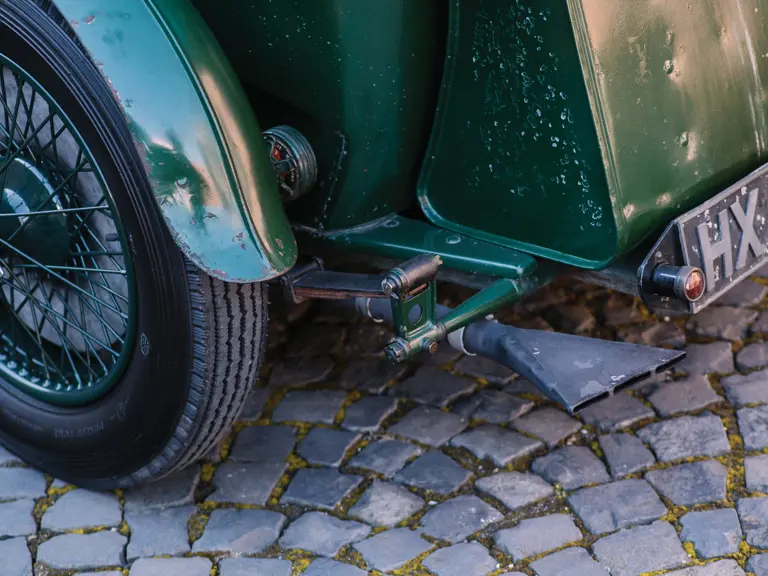
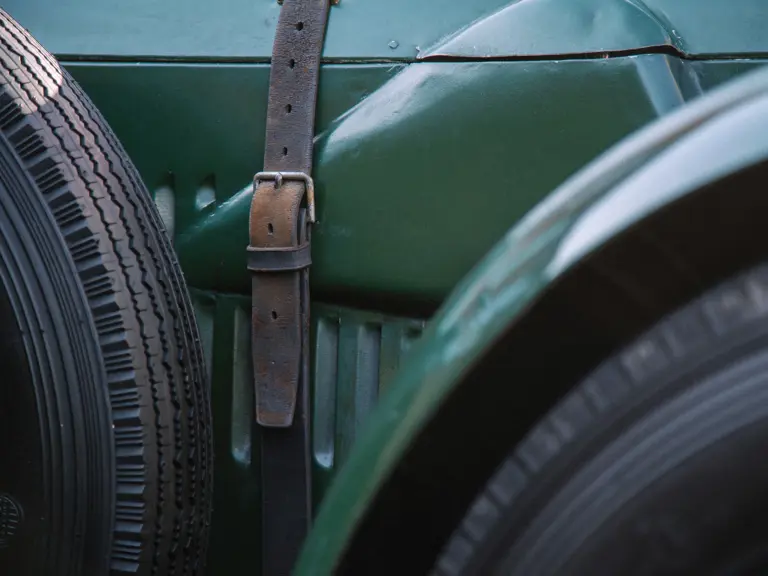
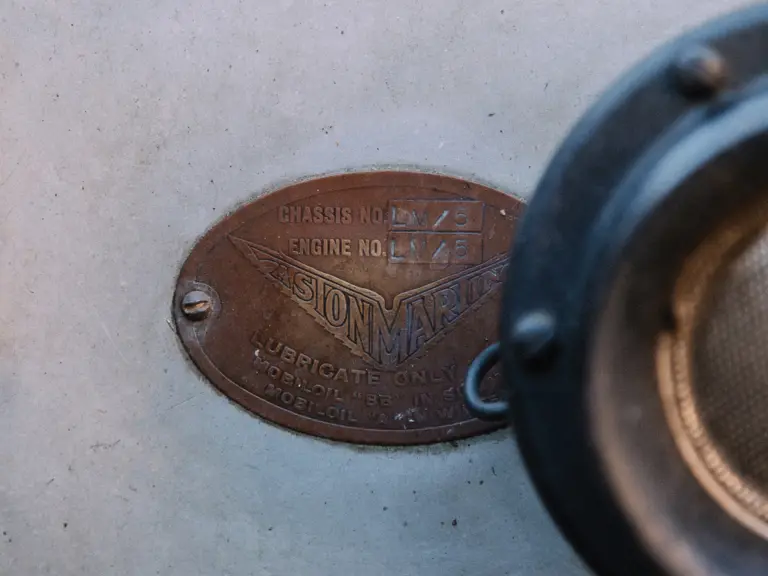
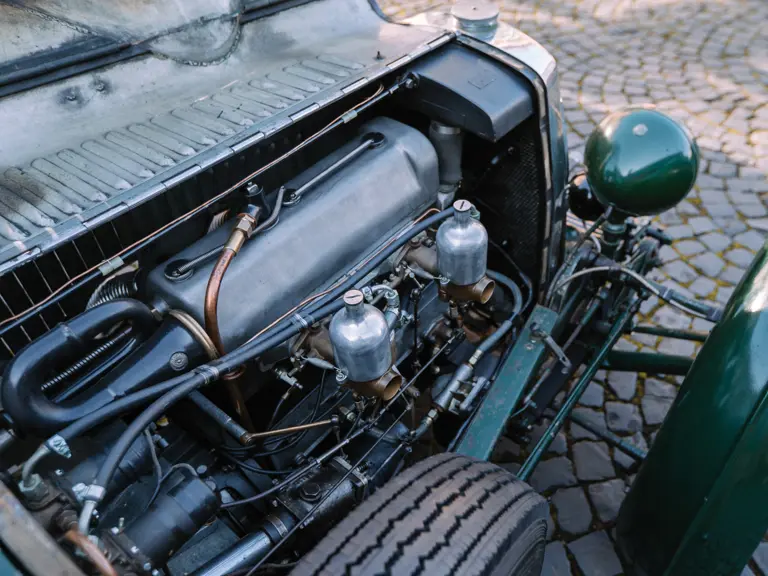
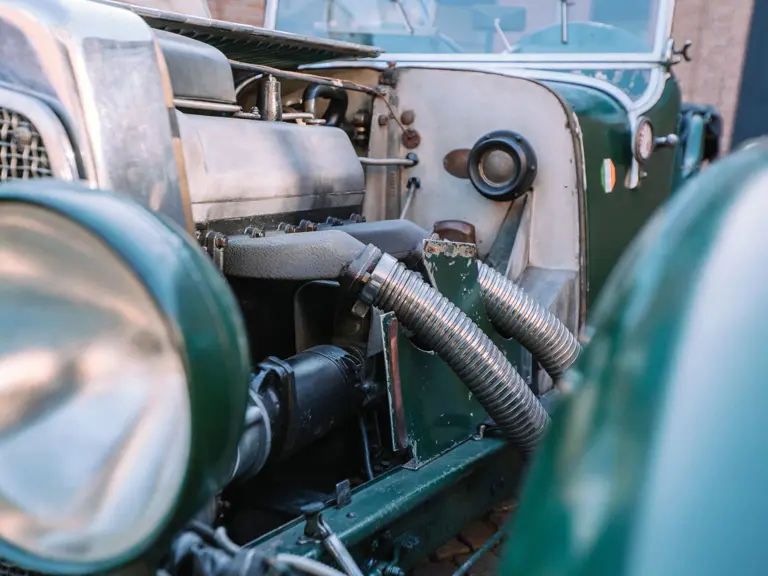
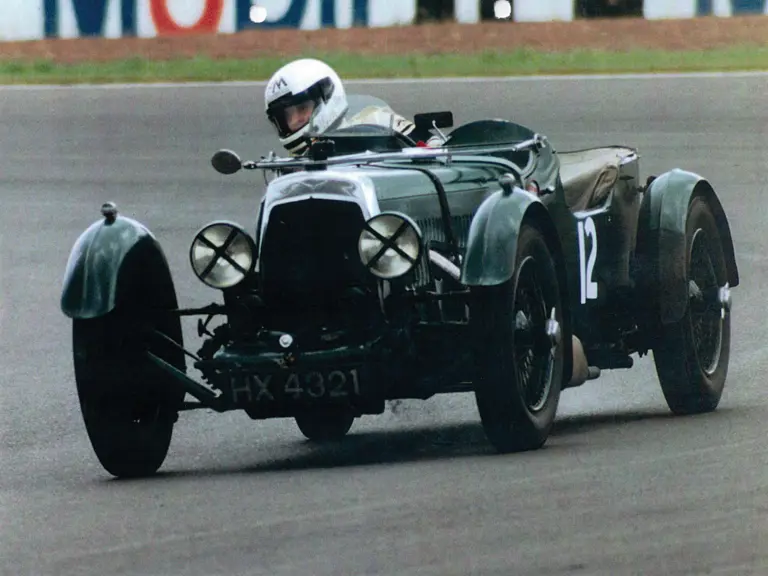
 | Cernobbio, Italy
| Cernobbio, Italy
